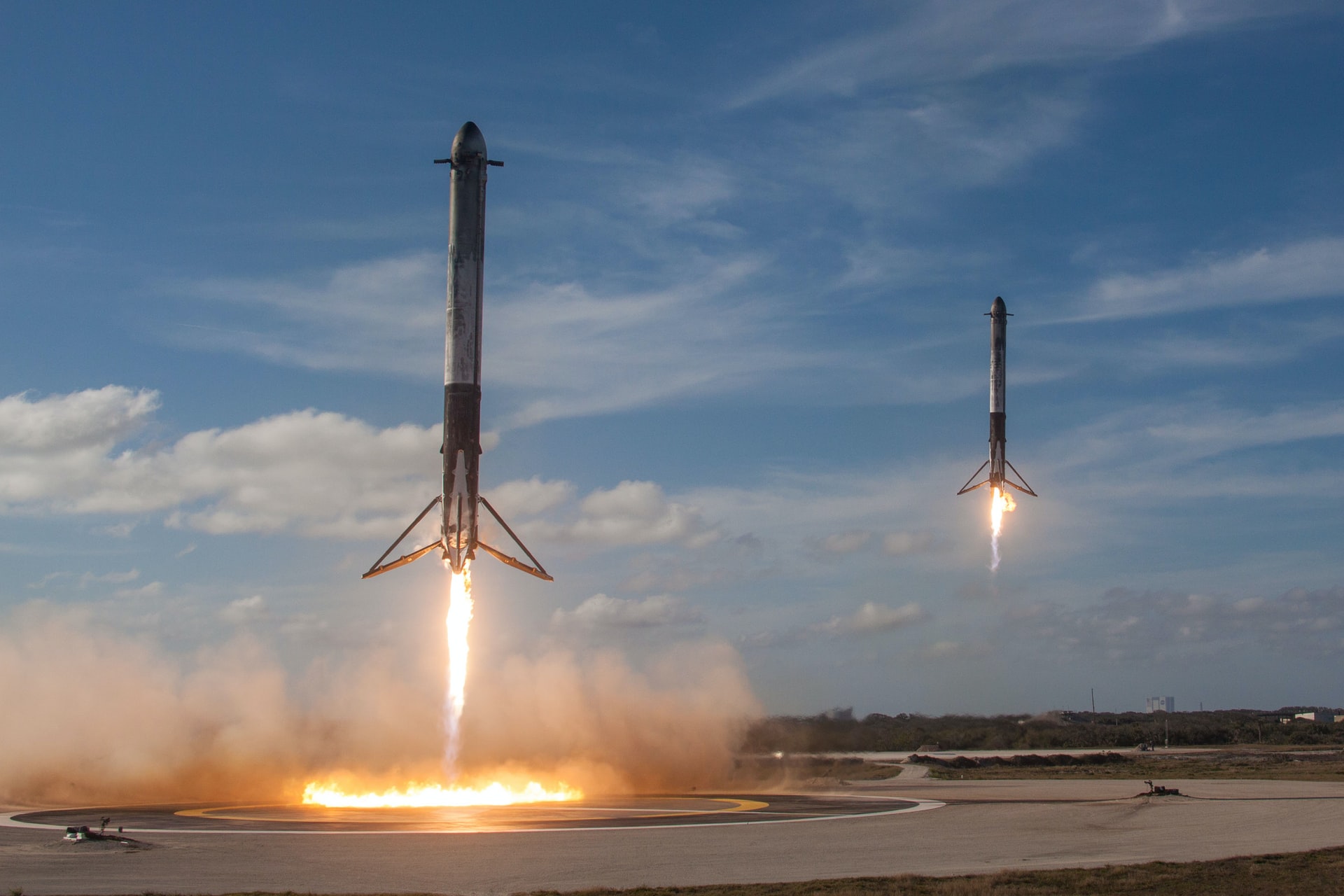The Outer Space Reusability Race

Whether it’s in school, from our parents, or in a book we read, most of us growing up in the United States learn about the space race, or at least the part where humans stepped foot on the moon during the Apollo missions. Some might be wondering why we haven’t returned in decades, specifically since 1972 with Apollo 17. Between ballooning costs, decreased public enthusiasm, and of course politics, there has just not been enough willpower to spur another mission. But these reasons nearly all relate in one way or another to the 1-and-done nature of the rockets which get launched. Up until recently, there has not been a mechanism to reuse parts or entire systems needed to launch rockets. Thankfully, companies like SpaceX and Virgin Galactic have been making incredible technological strides to fill this void, thus ensuring that space travel can become more sustainable.
The Stellar Idea
SpaceX has far and above led the way with its 3 main launch systems, Falcon 9, Falcon Heavy, and Starship. Falcon 9 is a partially reusable two-stage-to-orbit medium-lift launch vehicle, meaning that the first stage is capable of re-entering the atmosphere and landing vertically after separating from the second stage. One December 21st of 2021, it completed its 100th successful landing of an orbital class rocket booster, quite the incredible feat. You may have seen videos of their boosters landing. By being able to reuse the booster, the cost of sending the rocket to space is significantly reduced.
Taking a closer look at the numbers, between 1970 and 2000, the cost to launch a kilogram to space remained fairly steady, with an average of US$18,500 per kilogram. When the space shuttle was in operation, it could launch a payload of 27,500 kilograms for $1.5 billion, or $54,500 per kilogram. For a SpaceX Falcon 9, the rocket used to access the ISS, the cost is just $2,720 per kilogram. Pretty wild stuff. Since the rockets can be reused, there are less physical resources needed to build new replacement rockets each time, making the whole operation more sustainable.
Falcon Heavy and Starship
Falcon Heavy is essentially a beefed up version of Falcon 9, featuring a strengthened Falcon 9 first stage as the center core with two additional Falcon 9 first stages serving as strap-on boosters. This results in a partially- reusable rocket with the highest payload capacity of any currently operational launch vehicle and the third-highest capacity of any rocket ever to reach orbit, trailing the Saturn V and Energia. In simple terms, it is a beast. For this rocket, as of now only the outer cores are reusable and thus land themselves back on Earth after liftoff.
The third and largest rocket on this list is Starship, who’s ultimate goal is to help take humans back to the Moon and Mars. This rocket is still in development, but the aim is for it to be fully reusable, which would drastically reduce the cost of flying humans and cargo into space.
One of the main environmental downsides of these rockets and others is that they generate thrust for liftoff through the burning of fuel, releasing large quantities of methane and CO2. Being reusable means that more flights will take off, thus resulting in more emissions. WIth that being said, sending the rockets up into space has the upside of providing new scientific discoveries for mankind, and perhaps even a new home on Mars.
SpaceX, but What About the Rest?
SpaceX is not the only company looking to make reusable space rockets. One of the other notable companies entering into the new space race is Virgin Galactic. Led by Sir Richard Branson, they have several orbital and suborbital launch systems either in operation or in production. Their marquee space flight system is dubbed SpaceShipTwo, and is capable of carrying eight people (including two pilots) into space safely and with high frequency. It is brought to a suborbital altitude with the help of WhiteKnightTwo, which is a custom-built, four-engine, dual-fuselage jet aircraft, designed to carry SpaceShipTwo up to an altitude of ~50,000 feet. This makes SpaceShipTwo fully reusable in a similar manner to a regular airplane. This means that humans can become astronauts for the day on a cleaner, greener, aircraft.
There are countless other companies working on reusable orbital and suborbital space systems, such as Rocket Lab, Blue Origin, and United Launch Alliance. With that being said, as of now SpaceX is far and above the leader when it comes to launches of reusable rockets. On the Falcon 9 alone there have been 138 launches since its inception, with an over 90% rate of recovery since 2019. The next closest competitor, Rocket Lab’s ‘Electron’ rocket, has had 20 successful missions since 2017. Needless to say, SpaceX’s competition still has some ground to gain before they catch up.
This type of sustainability is not only good for the environment by reducing the number of new booster rockets and fairings that need to be built, but it is also good for profitability. Each time a space launch system has to be rebuilt, either from the ground up or even just portions like the booster rockets, billions of dollars are expended. It’s basically like buying a new car every time you go for a drive. With advancements in manufacturing and technology, there are several companies creating a totally new space landscape that can benefit us all. It is impressive to see how far space launch systems have come since the last Apollo missions, and it is even more exciting to see where they’ll be 10 or 20 years from now.


Leave a Reply